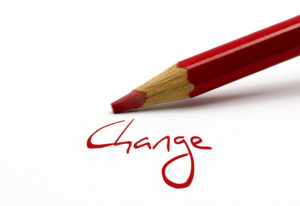 So how’s the resolution stuff coming?
So how’s the resolution stuff coming?
According to the experts, something like 40%-45% of Americans make New Year’s resolutions, with generally less-than-stellar success rates. Been there, done that.
But with each new year, I’ve come a bit closer to a goal-achieving method that works for me. The key was realizing that willpower was simply a non-starter (or non-achiever) for me; instead, I found that creating an environment, processes, and habits that supported my goals was what kept me on track.
Approaches that (might) work for achieving your goals
Like so many things in life, there’s no one-size-fits-all approach to achieving goals – it’s more a case of trying a specific approach, seeing what works or doesn’t, and then building on what does. Not sure where to start? Here are the best resources I’ve found for designing a goal-achievement approach that will work best for you:
The Power of Habit / Charles Duhigg, Random House, 2012. Understanding how habits drive our lives and choices (“the habit loop”) enables you to tweak your habits to support –rather than undermine – your goals.
Small Move, Big Change: Using Microresolutions to Transform Your Life Permanently /Caroline L. Arnold, Penguin, 2014. By transforming big goals into tiny, easily achievable actions, you build momentum and a track record of success. Arnold’s is one of the most accessible, actionable, and realistic of the books on achieving personal goals. Works especially well in conjunction with S.J. Scott’s Habit Stacking / CreateSpace, 2017.
Succeed: How We Can Reach Our Goals / Heidi Grant Halvorson, Hudson Street, 2011. How can you not love a book that has “goals for optimists” and “goals for pessimists?” Focuses on understanding how goals work, what tends to go wrong, and what you can do to reach your goals or to help others reach theirs. Think of this as the inner game of goal-achieving. Halvorson’s follow-up book, 9 Things Successful People Do Differently (Harvard Business Review Press, 2012), focuses on the specific success strategies of anticipating obstacles, using positive thinking, and creating a plan to overcome those anticipated obstacles.
Switch: How to Change Things When Change is Hard / Chip Heath and Dan Heath, Crown Business, 2010. Overcoming the battle between your rational and irrational minds, between instant gratification and long-term benefit, is a game rigged against us by our instincts. According to brothers Chip and Dan Heath, however, it can be done – and they provide highly practical methods of doing just that.
The Willpower Instinct / Kelly McGonigal, Avery, 2012. Willpower can be a powerful tool, as McGonigal makes clear, even if difficult to master. The book’s subtitle – “how self control works, why it matters, and what you can do to get more of it” – provides a good overview of the author’s approach, and her actionable focus.
Write It Down, Make It Happen / Henriette Anne Klauser, Fireside, 2000. Writing down their goals has helped countless individuals trying to change their lives. The key is to incorporate a level of written accountability related to the goals you seek – by when will you accomplish each step, how many actions will you take this week, how many networking lunches will you schedule for this month?
Lastly, my friends Mary Ellen Bates and Marcy Phelps pointed me toward a terrific resource, The 12-Week Year: Get More Done in 12 Weeks than Others Do in 12 Months / Brian P. Morgan and Michael Lennington, Wiley, 2013, which is the perfect antidote to keeping yourself on track and accountable for reaching your goals. (Not that any of us have been known to procrastinate, of course….)
Whats works for me (on a good day)
Once I realized that willpower wasn’t really going to be my ticket to consistently achieving my goals, I changed my approach to creating an environment and processes that made it easy for me to stay on track.
I started planning my upcoming week on Friday afternoon, assembling all necessary documents and information, phone numbers, meeting logistics, etc. in a single folder and lining out a weekly overview of meetings and project work time banks for each day. (Plan your week ahead of time so once you hit your desk you know exactly what to start working on.)
I signed up for Netflix and Amazon streaming so I could watch my favorite mysteries at the same time I worked out on my elliptical trainer (habit stacking).
I’ve broken down my major goal for 2018 – create and offer an online LIS career course – into its smallest incremental activities on which I can easily and quickly make progress and build momentum (small moves for big change).
And I now organize my major project goals in 12-week sprints so I can quickly see whether or not I’m on track according to my own commitments.
My intent is to create a frictionless environment that removes obstacles – whether logistical, structural, or psychological – to achieving my goals, whether small or large. Do I actually pull that off every day? Not a chance. But I come a lot closer now than I did a year or two ago. How about you?
